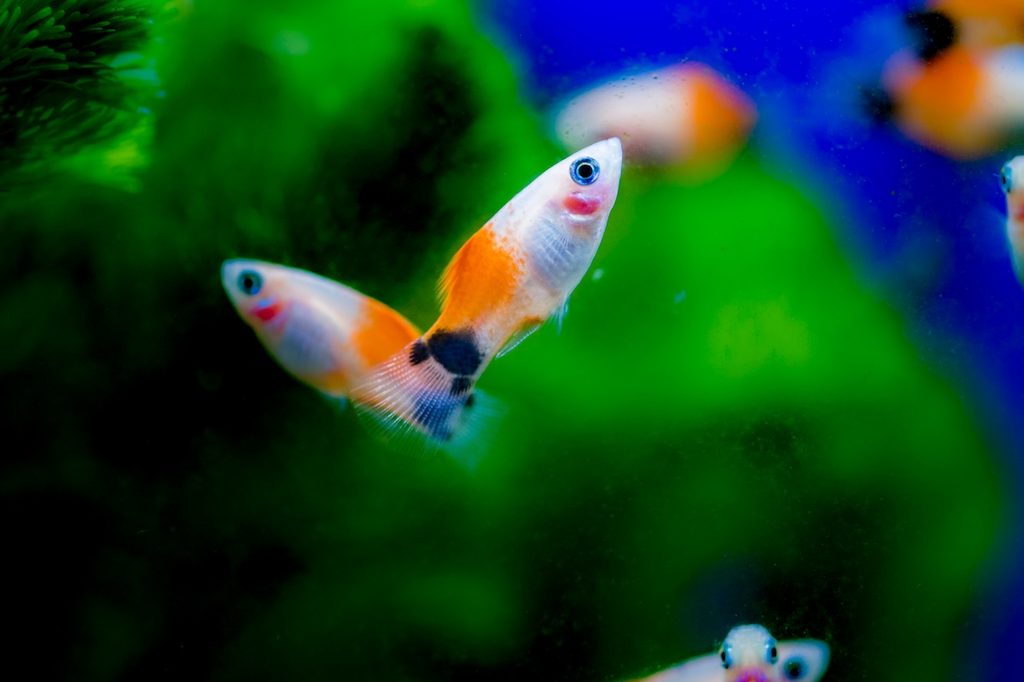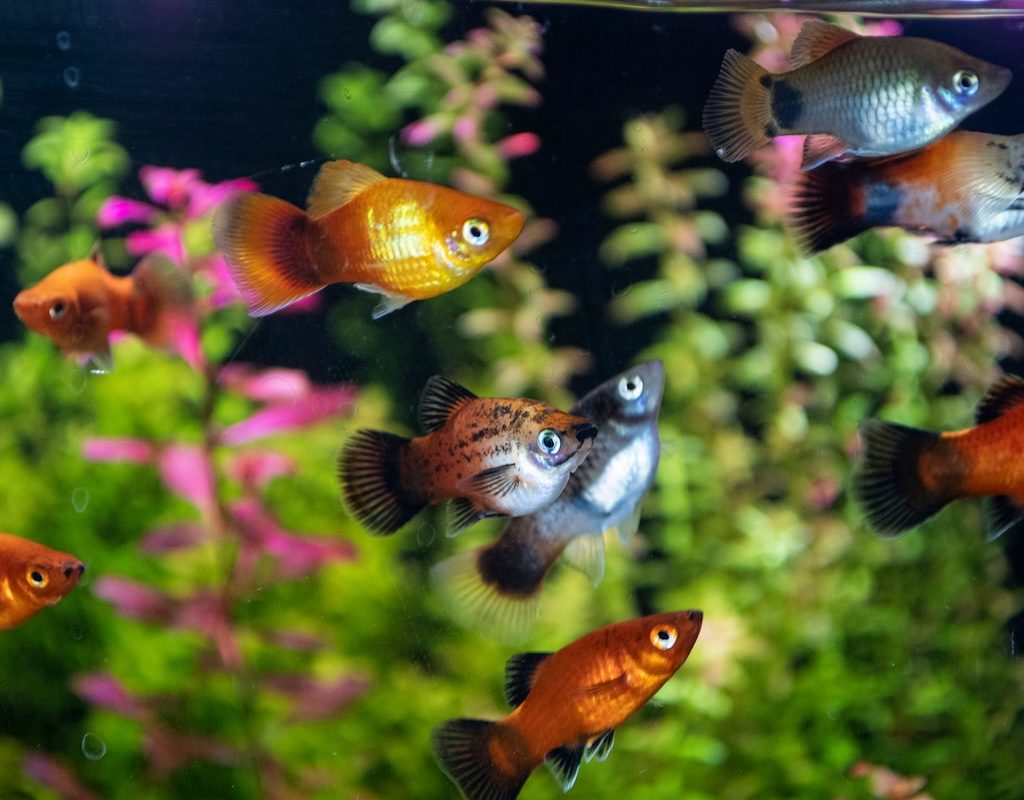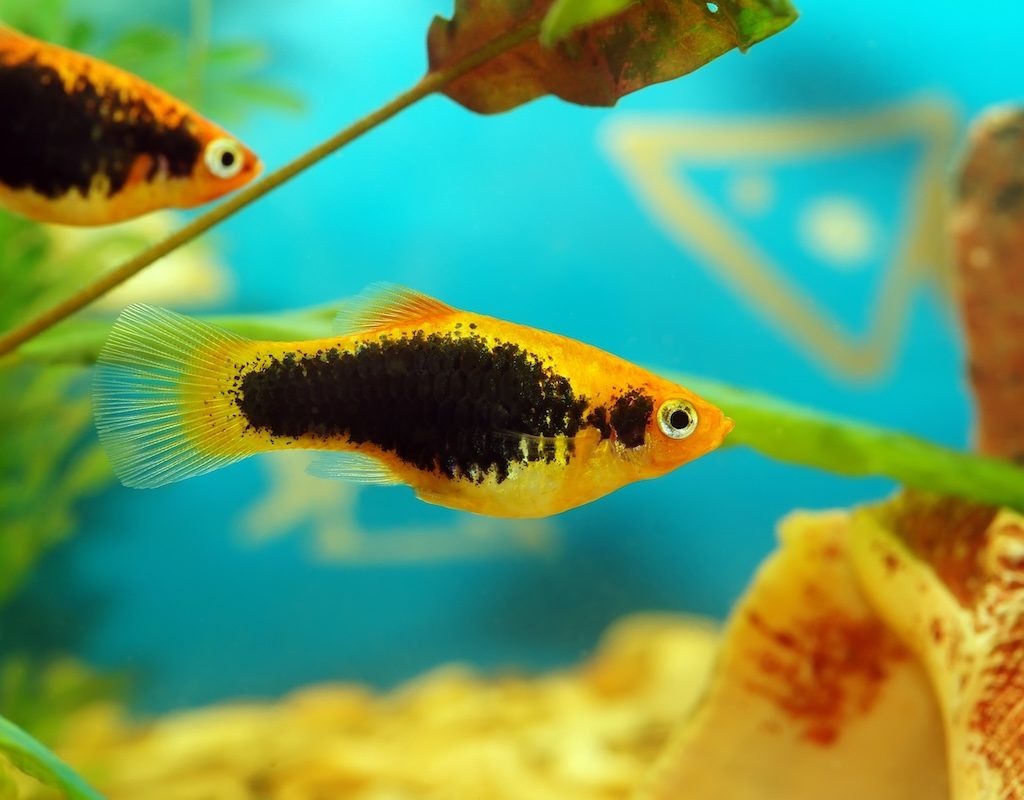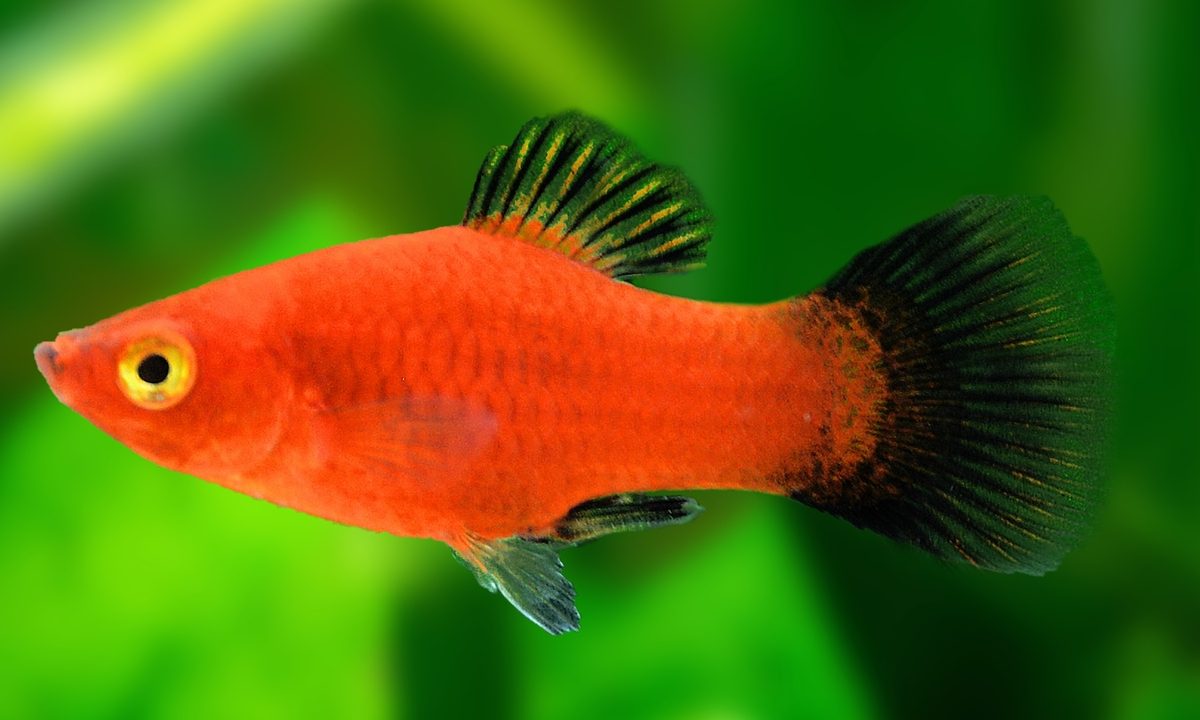One of the perks of getting an aquarium is filling it with brightly colored, beautiful fish. If you are a first-time tank enthusiast, then you’ll want to stick with swimmers that fit into the easy category. Of course, there’s no such thing as a true starter pet — all animals take commitment and care. But diving into the deep end won’t do anyone favors, which is why we recommend certain fish for newbies, including platies. Platy fish care has a few complications, but we’ll walk you through everything you need to know.
What is a platy fish?

Sometimes called the Southern platyfish or Mickey Mouse platy, these beauties are native to North and Central America. In the wild, they live in slow streams, ponds, and even ditches. In captivity, these guys only get a couple inches long with the females growing slightly larger. You will only have this fish for a few years; however, they do breed fairly prolifically, which means you could end up with a whole school without really meaning to.
Platy fish care: The basics

As we mentioned at the top, you won’t have too much trouble maintaining this crew, but keep these basics in mind.
Housing
A 10- to 20-gallon tank works best to house your platies, provided you can keep it down to just a few. Once you have more than five fish or so, you’ll need to upgrade to a bigger aquarium to fit all your underwater friends. Some owners decide to let their platies breed to their hearts’ content and just give away or transport some to start a tank nearby. Last thing, you definitely need a good filter here and possibly a heater as well, depending on ambient temperature.
Feeding
Your new fish will eat plants, algae, and insects if they get to choose the menu. Luckily, good flake fish food accounts for most of their nutritional needs. Platies do enjoy live or frozen food as well, and we highly suggest giving them that option since it’s engaging for both of you. Try blackworms, bloodworms, daphnia, brine shrimp, and fruit flies, either fresh or frozen. Note: It’s really important that you bring these in from a reputable store or website, and we don’t recommend trying to keep your own on hand at the beginner stage.
The lifecycle of platies

Having platies around will mean an almost endless supply of baby fish. It’s tricky to get them to stop, and you want to think ahead clearly about how you’ll handle this. As we discussed above, plan to relocate any extra fish — you don’t want to wind up with an overcrowded tank that will get unhealthy for everyone inside.
Breeding
The platy fish is special because it’s a live breeder, meaning it gives birth to babies and not eggs. Because of this, they don’t need any special assistance with the breeding process and will get to it just fine on their own. However, your fish want a ratio of two to three females for every male. You can also decide only to keep females if you don’t want to deal with the lifecycle at all (don’t keep only males or more males than females, as that will lead to fighting and other aggressive behavior).
Pregnancy
OK, you got the first part out of the way, and your fish have been free to breed with abandon. You’ll know that one is pregnant because she’ll swell up quickly, just like a mammal. Unlike us though, you can start to identify her gravid spot at the bottom by her tail. It gets bigger until she’s ready to pop and then out come the babies, called fry.
Babies
The newborns have arrived! It’s often smart to relocate them right away to prevent other fish from having them as a meal. Otherwise, ensure you have tons of plants in your tank and other areas where a tiny fish might hide from a bigger one. Once they’re full-sized fish, you can reintroduce them, but remember to maintain your ratio.
You’ll surely be glad you invested in platies once you have a small group happily swimming around your tank. It doesn’t take much for that school to grow, so carefully monitor the sex ratio in your aquarium and have some ideas for where any extras might go. Once you’ve been through a few breeding cycles, you’ll be an absolute pro at constantly getting new fish and will probably enjoy this aspect of the hobby. Their color combinations are numerous, too, so you can have fun figuring out how to get the right parents for your desired rainbow of fish.




